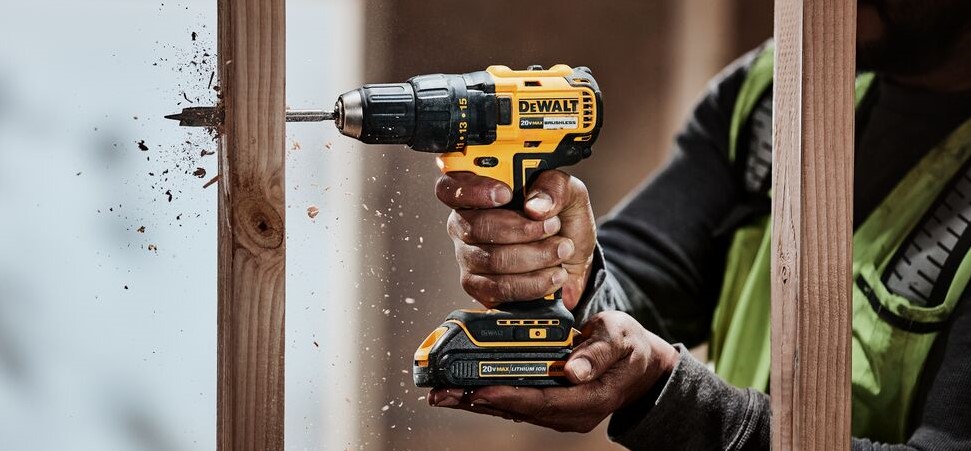When it comes to tackling tough jobs around the house or on the job site, understanding your tools is crucial. Hammer drills and impact drills might seem similar at first glance, but they serve different purposes and excel in distinct areas. Knowing the differences can save you time, effort, and even money.
If you’re considering which tool to use for your next project, it’s essential to grasp how each one works. A hammer drill is designed for drilling into hard materials like concrete, while an impact drill focuses on driving screws and fasteners with precision. Let’s dive deeper into these two powerful tools and help you determine which one is right for your needs.
Overview of Hammer Drills and Impact Drills
Understanding hammer drills and impact drills is essential for effectively completing various construction and DIY projects. Each tool has unique functionalities that cater to different tasks.
Definition of Hammer Drills
A hammer drill combines rotary drilling with a hammering motion. This dual action makes it suitable for drilling into hard materials, such as concrete and masonry. Hammer drills utilize a clutch system that engages a hammer mechanism, delivering rapid, short bursts of power. You can use this tool for tasks that require more force than a standard drill, making it perfect for heavy-duty applications.
Definition of Impact Drills
An impact drill focuses on driving fasteners like screws and bolts. Featuring a rotational action enhanced by concussive blows, it delivers significantly greater torque than standard drills. Impact drills excel at driving screws into dense materials without stripping the head. Many models offer adjustable torque settings, allowing you to customize the power delivered based on the task, making them versatile for various applications.
Key Differences Between Hammer Drills and Impact Drills
Understanding the key differences between hammer drills and impact drills ensures you select the right tool for specific projects. Each tool operates distinctly and serves different purposes.
Mechanism of Action
- Hammer Drill: Combines rotary motion with a hammering action. It applies rapid bursts of energy directly into the material, perfect for drilling into concrete or masonry.
- Impact Drill: Focuses on producing high torque while driving screws. It uses a rotational force combined with quick bursts of power to drive fasteners into materials.
Applications and Usage
- Hammer Drill: Ideal for heavy-duty tasks like drilling into concrete, brick, or stone. Use it for construction, renovation, and heavy-duty DIY projects.
- Impact Drill: Best suited for driving screws and bolts. Utilize it for woodworking, assembling furniture, or projects requiring precision and speed.
Advantages of Hammer Drills
Hammer drills offer unique advantages, especially when tasked with drilling into hard materials. Their design and mechanics provide distinct benefits that enhance performance for specific applications.
Suitable Materials
Hammer drills excel when tackling tough materials. They’re engineered for drilling into concrete, brick, stone, and masonry. The combination of rotational motion and hammering action allows you to penetrate dense surfaces effectively. For projects that involve structural work or renovations, using a hammer drill ensures better results and longevity.
Efficiency and Speed
Hammer drills operate at a higher efficiency compared to standard drills. They deliver rapid bursts of energy, enabling you to drill faster through tough surfaces. This increased speed reduces your overall project time, making hammer drills essential for heavy-duty tasks. Their consistent power helps maintain productivity during demanding tasks, ensuring you accomplish each objective swiftly without sacrificing quality.
Advantages of Impact Drills
Impact drills offer several advantages that make them essential tools for various projects. Their precision and control, along with their versatility in fastening, contribute to their effectiveness.
Precision and Control
Impact drills provide enhanced precision when driving screws. Their mechanism allows for controlled bursts of torque, minimizing the risk of overdriving or stripping screws. You can adjust the settings to match the required torque for specific materials, ensuring a snug fit every time. The lightweight design also makes them easier to maneuver in tight spaces, giving you better control during operation.
Versatility in Fastening
Impact drills excel in fastening tasks across a range of materials. You can use them for wood, metal, and plastic, making them suitable for both construction and home improvement projects. Their ability to drive screws at high speeds increases efficiency, allowing you to complete projects faster. Additionally, interchangeable bits enable you to switch between different fasteners with ease, enhancing your productivity when working on diverse tasks.
Conclusion
Understanding the differences between hammer drills and impact drills is crucial for any DIY enthusiast or professional. Each tool has its strengths tailored to specific tasks. Hammer drills excel in heavy-duty applications like drilling into concrete and masonry. On the other hand, impact drills shine in driving screws and fasteners with precision and control.
Choosing the right tool for your project can make all the difference in efficiency and results. By knowing when to use a hammer drill versus an impact drill, you’ll enhance your productivity and achieve better outcomes in your work. So next time you’re gearing up for a project, consider your needs and select the tool that best fits the job at hand.

Hi, I’m Md Rofiqul, a gardening enthusiast who loves spending time in the garden and backyard. I enjoy caring for plants, growing flowers and vegetables, and creating a green space that feels peaceful and refreshing. Gardening is more than just a hobby, it’s a passion that connects me to nature and brings joy to my daily life. Living with plants inspires me to embrace simplicity, patience, and sustainability while making every day more colorful and rewarding.
